Sherrill Joseph's Blog
August 25, 2025
Welcome, All Characters!
Hello, Kids, Educators, and Families,


School has already started in many cities across the country. Farewell, Summer!
Attentive readers may remember that I taught school for thirty-five years before retiring in 2013. Back then, here in San Diego, classes began the day after Labor Day. Now, school begins much earlier– in fact, on August 11 this year–to accommodate a huge transition to a year-round school schedule for the district.
If I were still teaching with that original later start, I’d be back in my classroom now, anyway, getting bulletin boards up, furniture arranged, and my parent letter-packet photocopied. I did all of that early for self-preservation: There were too many meetings, interruptions, and distractions once adults had returned to campus. I was willing to forgo a week of my vacation each August to enjoy having the place to myself and the gift of time to prepare. (Yes, I’m a chronic Type A+ personality.)
The first day of school can be stressful. Not just for kids, but for teachers and parents, too! My goal in welcoming my new students and their families to my classroom on Day One was first and foremost to ease everyone’s stomach flutters. Then could come some fun and the business of getting to know each other, the rules, and a brief overview of what they could expect in their new grade.
I had my first-day outfit and accessories chosen at least of week before the big day. It was usually a cheerful print dress or skirt to set a friendly tone. Since I team-taught with the privilege of focusing on the language arts components, I had an “All Characters Welcome!” bulletin board that couldn’t be missed near the door. Each student’s name and photo were posted. Their names and birthdays were already listed on a colorful chart with twelve bubbles, one for each month. I enjoyed seeing their smiles when they found themselves on it. A new pencil, and a colorful nameplate stood like a little index-card tent on each desk so they could settle into their new classroom.
Then, it was time to relax and get a bit acquainted. I would invite the kids to join me on the big classroom rug. “Raise your hand if your stomach was doing flip-flops last night or this morning,” I’d say. Nearly all hands went up. AND SO WOULD MINE! They looked surprised. “Did you know that even we teachers get nervous the day before school starts?” I asked. Surprised looks again. “Well, believe it or not, I’m a human being like you. I feel joy, fear, and sorrow, too. And I tend to have the same nightmare that one of you got so scared that you ran out of my classroom! How would I explain it to the principal?” That was always an ice breaker.
I would share silly requests such as, “Raise your hand if you like burnt marshmallows. Sauerkraut. Black licorice, etc. Responses were interesting, including mine.
Then, I had a story to share. “Thumbs up if this statement is true; thumbs down for false: Once, my heart stopped beating for six hours, and I lived to tell you about it.” Their fifth-grade heads were shaking, and most thumbs were down. “Impossible,” one would say. After a dramatic pause, my thumb went UP! “No way!” they’d shout. Then, I told them the story of my open-heart surgery in 1994 to correct a birth defect. You could hear a pin drop. The surgeons had to stop my heart for six hours to operate on it. I explained how they stopped my heart (gasps), and about the heart-lung machine hook up. Of course, it was mostly the boys who wanted the gory details about the blood and operation. But many girls were all ears, too.
The First Day galloped along with some quiet reading time at their desks as I checked reading levels. Recess. Where to line up. Lunch. A chapter book teacher read-aloud started. A fun art project. A session of “Ask the Teacher Anything that is School Appropriate.” That parent-letter packet distributed and discussed. The dismissal bell.
Before they left, I would say, “Don’t forget to come back tomorrow. If you don’t, we will miss you. My heart will be sad. Let’s make this a place for our hearts to sing–every day, and where everyone feels comfortable to be themselves.”
I never tired of the smiles on their faces as they jostled out the door to rejoin parents. Some even said, “Thank you, Ms. J. I’m going to like being in your class.” I miss that.
(Photo Credits: Atlantic Ambience on pexels.com–left; Pixabay on pexels.com–right)
July 27, 2025
Grand Postcards
Hello, Kids, and All Readers,
Do you enjoy receiving postcards–at Summer Camp, on a Staycation, or just while enjoying the season as your lucky friends or relatives travel the world?
It can be exciting to see what the sender chooses: something unique to them, tailored to you, or a must-share, spectacular site visited.
Currently, my almost-ten-year-old granddaughter is at a two-week summer camp. She liked the postcards I sent her there last year, so I decided to make it a tradition. I found some fun Animal Joke postcards online and snapped them up. I sent seven to her, one per day, starting last weekend, so they would all be sure to arrive during her stay. There are many left, so I plan to send a steady stream of them to her at home to continue our fun.
Her brother, my four-year-old grandson, could not be left out, so I tapped into his current passion: Batman. You can find just about anything in online stores now, and I hit the jackpot: a boxed collection of 100 Batman postcards in a beautiful cardboard keepsake box. I understand from his dad that they are a hit with my little Caped Crusader! He feels very special, getting one per day from “Gigi”–my grandma name–out of the mailbox when he gets home from preschool.
So, get a clue, readers. Do you have some special kids in your life who would appreciate hearing from you in this fun way? It helps erase the miles between my grandkids and me, provides an opportunity for the three of us to get to know one another better, and fosters a love of reading and writing. And what great memories and souvenirs we are creating with this tradition. May you do the same with your loved ones of any age. Happy Summer!
(Photo Credits: All photos taken by the author)

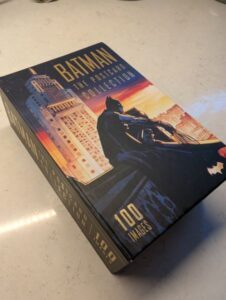
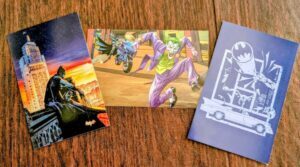
June 25, 2025
Cut It Out!
Dear Kids and all Readers,
Years ago, I started collecting cookie cutters.
I now have cans and bags of them for every season as well as some evoking the seashore, the farm, fruits and vegetables, and miscellaneous activities and objects.
Before I had grandchildren, I envisioned making cut-out cookies with them someday to create fun, delicious, and memorable events; hence, the collection. Now that I have grandkids, I usually pack a fraction of my collection in my suitcase when I travel east just in case anyone is in the mood to bake. It never takes any persuasion!
Last month was no exception. For my grandson’s fourth birthday, I gifted him with three cookie cutters that I knew he would love: a train, a truck, and a sports car. He proudly paraded them around the room! The next day, the sugar cookie dough was made and chilled. Then, he, my nine-year-old granddaughter, and I created some sweet magic. The little guy had fun learning how to position the cutters just right to optimize the dough between roll outs. Then with his big sister’s help, he pressed down on each cutter and removed the excess dough to form the perfect cookie vehicle.
After a brief trip to the basement to take shelter during a tornado warning (!), we returned to the kitchen to sprinkle their creations with multicolored sugar, bake the treats, and devour them.
As a writer, I look for inspiration from life’s events. It was natural, then, for me to think about the pros and cons of cookie cutters. They are excellent tools for crafting fun, delicious treats that can leave fond memories in the hearts of the bakers. But foisting cookie-cutter characters onto my readers is disastrous! Why? Because readers should expect and writers should deliver characters that are deliciously three dimensional. Flat, predictable, cookie-cutter characters are boring and hard to relate to.
Readers, here is what to look for in well-formed characters. And Teachers and Writers, here is how to bring your characters to life for sizzling fiction. Ask:
What do the characters look like? What do they wear? Are they individuals or conformists? Is there adequate description so you can envision them in a setting?What do their facial expressions and body language say about their joys and inner turmoil?How would you describe their personalities? Are more layers added as the book progresses?What do they say? Do their words or conversations sparkle, reveal deeper personality traits, and square with their motives and actions?What makes them tick? Do they have unique mannerisms, habits, hobbies, quirks, witticisms, pets, relatives, and friends or enemies that make them interesting–for better or for worse–while avoiding stereotypes?What are their strengths and weaknesses? Do they sometimes blur the lines between good and evil? These make them humble, sometimes stumble, maybe questionable or admirable, relatable human beings.What are their flaws, needs, and wants? How do they treat others? These can further their relatability and help explain their motives, expectations, and actions.Do they make us feel what they are feeling so we can take deep dives into their motives and actions and our own?What are their backstories? These add interest, relatability, and understanding.Do they grow and evolve over the course of the story or series? This plumps dimensionality.I hope you find my characters in the Botanic Hill Detectives Mysteries fully fleshed out, not flat! I try to make them 3-D on every page.
If you would like to add any ideas to my list of ten above, please email me at kidsauthor@sherrilljoseph.com. Please put “Cut It Out” in the subject line.
If you would like to learn more about how to avoid cookie-cutter characters as a reader, teacher, or writer, check out K.M. Weiland’s book, Creating Character Arcs.
So, get a clue. Cookie cutters have their place, especially in my kitchen. They help us create delicious treats. But never expect them as, or use them to create, characters in books!
May 17, 2025
Mentor: In Memoriam
Hello, Kids and All Readers,
Jacqueline Bouvier. Inquiring Camera Girl. Jackie Kennedy. Jackie O. (my least favorite of her monikers). Wife. Mother. First Lady. White House Restorer. America’s Queen. Influencer. Writer. Editor. Grandmother.
These are a few of her names, titles, and roles. But to me, she was Mentor.
I met my mentor-to-be in my living room via television on January 20, 1961. I was eight years old. Her husband, the dashing JFK, had just been inaugurated as the thirty-fifth president of the United States. That day, at age 31, Mrs. Kennedy became the third youngest first lady in US history.
On the spot, young me was mesmerized by her elegance, sophistication, and beauty. But what truly impressed me was that an infant (JFK, Jr.) would be living in the White House for the first time since the turn of the century! Many in my family were abuzz over it. I remember secretly wanting to go to Washington, DC, to play with the two-month-old baby and his big sister, Caroline, age 3. In fact, I wanted to become their bigger sister! I decided that Mrs. Kennedy would be a wonderful “second” mom for me while I was visiting them. I did not realize yet how far away their house was from mine in California!
That day in 1961 began my lifelong admiration for Jacqueline Kennedy. As I grew, I watched her grow into her role as our stunning, intelligent, yet shy First Lady, who spoke four languages fluently, plus some German, Polish, and Greek. She was a proud Francophile and American who attended Vassar College and graduated from George Washington University with a degree in French literature. Her uppermost goal as First Lady was to raise her children as privately as possible for their well being. While living in a fish bowl called the White House! Can you imagine? But she managed it gracefully, working diligently to keep Caroline and John, Jr. away from the cameras whenever possible while spearheading the restoration of the president’s home, and Lafayette Park across the street. Years later, she would save New York’s Grand Central Station from the wrecking ball. Being very private herself, she declined nearly all requests for interviews for the rest of her life. If she were living today, she would not be sharing about herself on social media!
Shortly before my eleventh birthday in 1963, I tearfully watched Mrs. Kennedy lead the president’s funeral procession and the world through the gray windswept November streets of Washington and up the hill into Arlington National Cemetery to the sound of bagpipes and beating drums. I had never witnessed such courage, dignity, class, and fortitude as she demonstrated during that epochal event. My mentor stood erect the entire awful, four-day weekend, which is seared into my memory forever. My heart still aches over it. Afterwards, Mrs. Kennedy returned to the White House to greet countless heads of state. Then, she quietly climbed the stairs to the living quarters and held a birthday party for her son, who turned three that same day his assassinated father was buried. Our First Lady was only thirty-four years old! Instantly, she taught me resilience and that I could do anything.
Her hair styles and clothing choices continued to influence fashion worldwide long after she left the White House. In junior high, I took sewing classes for many reasons, one being to make those cute shift dresses she popularized. I had a closet full of them well into my teens and still favor that classic style. And in high school, I took French because Jackie Kennedy spoke it, befitting her ancestry. In college, I majored in literature because she taught me the importance of its artistic, cultural, and historical scopes. After my daughter went off to college, I took horseback riding lessons because Jackie was an accomplished equestrienne. And she taught me to write thank-you notes.
In my thirties, right about the same age as Jackie Kennedy was when she became First Lady, I found myself a single mother. I looked to my mentor for support. She did not disappoint. I remembered two things she said when asked how she coped with raising her children without her husband present. First, she said she had resolved to continue on after accepting the necessity of “doing that which is right in front of you.” What was right in front of her? Her children. So, my eyes became glued to my daughter. I quickly learned, as Jackie must have, that caring for children puts steel into your backbone, kindness into your heart, and priorities in the proper order. Second, Jackie Kennedy also famously said, “If you bungle raising your children, I don’t think whatever else you do well matters very much.” Right! My course was set. I would walk in my mentor’s footsteps and try not to bungle raising my daughter. (If I do say so myself, my daughter is a remarkable person, wife, mother, friend, and passionate, professional leader. I think Jackie would be proud of her and me!)
Regrettably, I never got to meet Jackie Kennedy in person but have made it my mission since childhood to learn all I can about her. A writer friend, Sheila Lowe, who is also a professional handwriting analyst, recently shared with me what Jackie’s signature reveals: that my mentor was “elegant and warm, but basically a loner who showed little of her true self.” Well, I certainly mirror the loner aspect and will continue to strive for her elegance and warmth! And frankly, I would like nothing better than to kick my social media presence to the curb.
I think of Jacqueline Kennedy often but especially in May–not only because of Mother’s Day, but because the anniversary of her death is May 19. She has been gone from us physically since 1994, but I will eternally seek her in spirit, galloping to catch up. If I had never come to know her, I would not be the person I am today. How fortunate for me that our time on Earth overlapped! I believe that I chose my mentor well. Mrs. Kennedy, I cannot thank you enough.
Dear reader, who is your mentor? What accounts for your choice? What have you learned from her or him?
(All photos are from Wiki Commons and are in the public domain.)
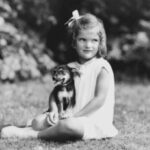


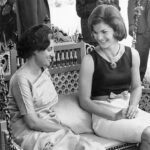
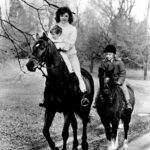


April 27, 2025
Picture This!
Hello, Kids and All Readers,
Between working on Book 7 and all its related tasks, I’m keeping a decades-long promise to myself. Call it Spring Cleaning, Common Sense, or my Gift to my Descendants.
By choice, I became the repository of 150 years of family photos. You probably know where this is going. Three huge plastic tubs of my family’s pictorial history have been calling to me for almost fifty years. About ten years ago, I sorted them into year groups. Brava to me for that foresight because finally, I’m preparing the photos to scan onto flash drives.
My main reason is so my daughter doesn’t have to do it someday when I’m not around to provide the necessary backstories, identifications, and relationships. The other reason is that I can’t stand stuff and clutter! It’s time.
I didn’t realize the emotions this project would engender: Who was my great-grandmother, Annie Lavinia Sherrill Lanyon, really? She’s my namesake. I wish I had known her. Ah, those were the good old days when I was a kid! I had just met Nancy Drew, her chums, and their mysteries. I miss my relatives who are long gone. I wish we could gather around the Thanksgiving table just one more time. How can I have a daughter who’s in her forties now? Wasn’t she just born a few days ago? And I even have grandchildren! (I’m not complaining.) And so on. And so on. The big message that washes over me each time I return to the project is that time flies too quickly.
So, get a clue, dear Readers. It’s important to let those you love know that you do. Often. And ask them lots of questions while you can. Live in the moment. You’ll thank yourself someday. So might your descendants.
(All photos are the sole property of my family and me for our use only. Thank you.)
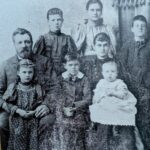
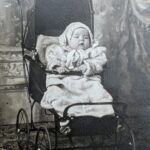
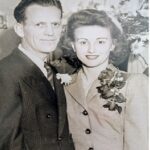





March 30, 2025
Literary Pretenders
Dear Readers,
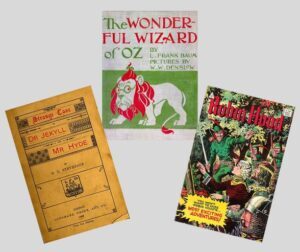 For better or for worse, we live in an age of identity and accountability. How often have you started to log into a site only to hear or read, “Let’s be sure it’s really you”? Next, you receive a text or email with the magic code to enter and confirm you are you.
For better or for worse, we live in an age of identity and accountability. How often have you started to log into a site only to hear or read, “Let’s be sure it’s really you”? Next, you receive a text or email with the magic code to enter and confirm you are you.
Despite these important safeguards, scammers, phishers, hackers, and cyberspies bombard us daily. Seniors are especially vulnerable. But so is any taxpayer. We work hard not to be those threat actors’ next victims.
So, with such real-life headaches and heartaches dished out by pretenders, why do we love to delve into crime and mystery books with more nefarious characters? To answer that question, let’s investigate three pretender types. The first, every crime fiction reader knows: The Impostor.
An impostor (the preferred American dictionary spelling) is a person who pretends to be someone else with the intent to deceive others, especially for fraudulent gain. They are grist for the crime or mystery story mill. Some famous tragic or humorous literary impostors can be found in these selected works: Patricia Highsmith’s successful The Talented Mr. Ripley series, L. Frank Baum’s The Wizard of Oz (the man behind the curtain), Peter Cameron’s Andorra, Nella Larson’s Passing (biracial mix-up), and many Shakespearean works, such as Twelfth Night (Viola), Measure for Measure (The Duke), and Othello (Iago). GoodReads has many more impostor-themed books to add to your TBR pile.
Literary impostors span centuries. They allow writers, readers, and moviegoers to explore themes of power, identity, and social roles. These impostors raise important questions about who we are, how we got that way, and where we wish to go. Through them, we might vicariously and safely experience a radical, inexpensive makeover and start a new life. Literary impostors, who send caution packing, can be compelling.
 Another literary pretender is the doppelganger. The German word means “double goer” or “double walker.” This mysterious literary character can be an apparition or an evil double, clone, or dead ringer of a living person who is not related to that person but has the same facial features. There have been millions of actual doppelganger sightings worldwide over the centuries, giving rise to many equating them with evil omens. We remain fascinated by daring doppelgangers, as evidenced by such selected works as Anthony Hope’s The Prisoner of Zenda, Mark Twain’s The Prince and the Pauper, Fyodor Dostoevsky’s The Double, Vladimir Nabokov’s Despair, Daphne du Maurier’s The Scapegoat, Shakespeare’s Comedy of Errors, Robert L. Stevenson’s Dr. Jekyll and Mr. Hyde, and Edgar Allan Poe’s “William Wilson.”
Another literary pretender is the doppelganger. The German word means “double goer” or “double walker.” This mysterious literary character can be an apparition or an evil double, clone, or dead ringer of a living person who is not related to that person but has the same facial features. There have been millions of actual doppelganger sightings worldwide over the centuries, giving rise to many equating them with evil omens. We remain fascinated by daring doppelgangers, as evidenced by such selected works as Anthony Hope’s The Prisoner of Zenda, Mark Twain’s The Prince and the Pauper, Fyodor Dostoevsky’s The Double, Vladimir Nabokov’s Despair, Daphne du Maurier’s The Scapegoat, Shakespeare’s Comedy of Errors, Robert L. Stevenson’s Dr. Jekyll and Mr. Hyde, and Edgar Allan Poe’s “William Wilson.”
Doppelgangers have long enthralled writers, readers, and moviegoers because they provide fodder for intricate comic or tragic plots of mistaken identities. And the plots thicken when relatives or friends wrongly swear that a character is someone they most certainly know—but do not! These dangerous doubles can also help reveal a character’s dark or bright side. Those who have seen or wish to meet their doppelgangers or twins may especially relish this subgenre of pretenders.
We cannot omit the avenger. Unlike impostors and doppelgangers, avengers can be quasi or complete do-gooders, perhaps part of the “superhero” set. Avengers are characters often disguised (like impostors) or morphed into stronger versions of themselves. Their goal is to punish or inflict harm in return for an injury or wrong done to themselves or others. They draw swords or lightsabers, shields, and blood in the name of good, not evil. Avengers appear in these selected works: Alexandre Dumas’ The Count of Monte Cristo, Faye-Lynn Wu’s Mulan: The Legend of the Woman Warrior, Howard Pyle’s Robin Hood, Johnston McCulley’s Zorro series, Miguel de Cervantes’ Don Quixote, Batman, Wonder Woman, Superman, Black Panther, Luke Skywalker, etc., etc., etc. (Most have film adaptations.)
 Sometimes—but not always—avengers pursue the rich and the greedy. These pretenders might earn or be granted carte blanche permissions that readers or audiences tend to expect and applaud. No wonder fantasy, comics, and pulp literature are replete with avengers and that Hollywood continues calling. Cha-ching! These characters can be powerful, brave role models to help us become our best selves and transform the world into landscapes of peace and justice for all. Avengers make us smile, cheer, and unite when they vanquish the evil forces. Soon, we forgive and forget any vicious acts they committed in the name of their just causes.
Sometimes—but not always—avengers pursue the rich and the greedy. These pretenders might earn or be granted carte blanche permissions that readers or audiences tend to expect and applaud. No wonder fantasy, comics, and pulp literature are replete with avengers and that Hollywood continues calling. Cha-ching! These characters can be powerful, brave role models to help us become our best selves and transform the world into landscapes of peace and justice for all. Avengers make us smile, cheer, and unite when they vanquish the evil forces. Soon, we forgive and forget any vicious acts they committed in the name of their just causes.
For centuries, impostors, doppelgangers, and avengers have appeared in classic crime and mystery literature. But we still might want to remove these pretenders’ masks, check their IDs, and reveal them as criminals for indictment or heroes for laudation. Crime and mystery writers, readers, and film aficionados do just that. The genre seems to preordain it. So please keep the security line moving!
(Graphics credits: The book covers within my ad and the Zorro image are from creativecommons.org and are in the public domain. The free graveyard image is from Valeria Boltneva on pexels.com.)
February 20, 2025
“Hoist the Jolly Roger!”
Ahoy, Kids and All Readers!
Yes, I’m still talking like a pirate. And for a good cause: The four detectives and I are busy writing the first draft of The Botanic Hill Detectives Mysteries series Book 7, Macadamia Street: Hidden Skeleton. And we’re having a jolly good time of it, too! Prepare for tales of cutthroat pirates, treasure galore, and pirate culture within a present-day mystery, releasing this fall.
This brings me to the flag–the Jolly Roger–hoisted aloft on some pirate ships toward the end of The Golden Age of Maritime Piracy. This flag still strikes fear into hearts, minds, and souls on sea and land. I incorporated some of its fascinating historical details you’ll want to read into the mystery.
During a lesson guided by the kids’ tutor, Bruce Wilding, the four detectives worked cooperatively to glean much information about the Jolly Roger. Here are highlights of their presentations:
LEXI–“We think of the Jolly Roger in connection with pirates. Even though The Golden Age of Piracy started around 1650, the Jolly Roger didn’t appear on pirate ships’ masts until around 1700. Vexillologists—scientists who study the history, symbolism, and usage of flags—aren’t certain where the flag’s name Jolly Roger came from. But there are several theories. It could have come from two French words joli rouge [jo-LEE-ROOJ], meaning ‘pretty red.’ The red color could have referred to earlier pirates’ red flags, also called ‘bloody’ flags, flown to warn their victims. Red meant ‘no quarter given’—no mercy for captured enemies. Another theory is that it might have come from the English word Roger, slang for a dishonest person, scoundrel, vagabond, or the devil! And Jolly could have meant that pirates saw themselves as happy-go-lucky. Over time, pirate flags in all colors became known as Jolly Rogers.”
MOKI–“From 1700 to 1730, the Jolly Roger was visible on most pirates’ ships. By then, the flags had a black field with various elements like a white skull and crossbones. Sometimes, images of red hearts, birds, daggers, hourglasses, and blood drops were included. But there wasn’t one standardized Jolly Roger for all ships. Pirate captains usually designed their own to send messages to make their enemies tremble. So, the white and colorful symbols on the black flags could be different. The skull and crossbones remained popular because those on land and sea recognized them as symbols of death.” In the story, Moki goes on to discuss six famous pirates’ unique Jolly Rogers.
RANI–“The flags were decorative, symbolizing ships’ captains and crews. Overall, the flags served important purposes. Pirates flew the Jolly Roger as their first weapon against their enemies. The frightening images flapping in the strong winds on the high seas or as ships entered ports seemed to scream, ‘Beware! We’re coming to get you and your treasures. There’s no hope. Throw down your weapons and surrender!’ A Jolly Roger was like a giant sign spelling out a pirate captain’s name and reputation. That alone could make merchants and other pirates give up without a battle. Not having to fight saved the conquering pirates time, effort, resources, their lives, and a large stockpile of treasure from previous plunders while adding what they just captured.” Rani continues by talking about the risks the pirates incurred by flying the Jolly Roger and the tricks they pulled with the flag.
LANNY–“The Jolly Roger has endured for over 300 years and is now associated with rebellion, adventure, and lawlessness. We see the flag on some clothing, wherever pirates are represented, in movies like Pirates of the Caribbean, and literature like Robert Louis Stevenson’s book Treasure Island. Various countries’ military branches have used it like some British naval submarines during World Wars I and II when returning home from successful missions. In the United States, some naval air squadrons still use the skull and crossbones insignia on their fighter aircraft, and the squadrons are called ‘The Jolly Rogers.’ The only U.S. naval ship authorized to fly the Jolly Roger is the USS Kidd, and the crew is known as the ‘Pirates of the Pacific.’ And some of the Pittsburgh Pirates baseball team’s uniforms still have Jolly Rogers on the sleeves. It isn’t illegal in the United States to fly the Jolly Roger on a personal boat, ship, or building. But you might have to deal with scared people misreading your intentions. The Jolly Roger seems to be in our culture to stay!”
So, go smartly there, all Readers, and get a clue! Do you hoist the Jolly Roger? Is so, did you design your own? I hope you are looking forward to the release of Macadamia Street: Hidden Skeleton. As always, thank you for your ongoing support.
(Photo Credits, left to right: Harris Rigorad, Masha Mirra, Nati, and Mateusz Dach on pexels.com)



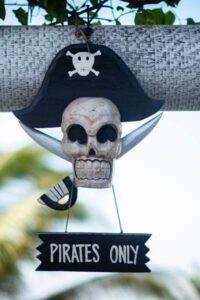
January 27, 2025
Were Pirates of Yore Literate?
Hello, Kids and all Readers,
You may be wondering why I’m writing about pirates. Perhaps you’re asking, “Who cares if pirates of yore could read and write?”
I do! And I hope you will, too. Here’s why:
As I write Book 7, Macadamia Street: Hidden Skeleton, in my Botanic Hill Detectives Mysteries series, I find that pirates are running rampant across its pages!
My new mystery with a twist of pirate history is set in Penzance, Cornwall. Many of my paternal ancestors were Cornish. I’ve traveled there only once–but not to Penzance. As a result, I’ve had to do extensive research to make my story authentic, interesting, and factual. The English town has a searing, centuries-old history of Barbary pirate raids, plundering, and kidnappings of men, women, and children to support the White slave trade in northern Africa.
My Macadamia Street mystery is centered on a present-day grisly, pirate-related discovery in a country manor house called Crow’s Nest Grange. Beginning in 1723, it became home to the earls of Stowesbury. Now that the tenth and last earl has died without an heir, the Stowesbury line is extinct. The earl has left the estate to his solicitors, Mr. and Mrs. Lamb. While beginning some restorations on their new, extensive property, the Lambs find what could be evidence of a pirate captain’s ship’s log from the early 1700s! That fictional pirate captain was One-Eyed Jack.
Enter the Botanic Hill detectives. They notice the writing on the two tiny paper scraps, possibly from Jack’s ship’s log, shows mostly illustrations but few words. Does that mean Captain One-Eyed Jack couldn’t read or write? The answer is important as it could help unravel more discoveries, questions, intrigue, and mysteries that crop up as the sleuths’ investigation progresses.
And that’s how I became interested in pirates’ literacy!
As you might suspect, some pirates of yore could read while others could not. According to author Rebecca Simon, “literacy rose during the seventeenth and eighteenth centuries in England and the North American colonies . . . thanks to the rapid expansion of print on both sides of the Atlantic.”
Since many pirates at that time started their dubious careers as educated, experienced sailors, then privateers–commissioned as legal agents of the British crown to plunder ships at sea–there is reason to believe many pirates were literate. Knowing how to read and write were essential skills onboard ship to keep careful records of weather conditions, navigation, crew members, treasure inventories, supplies, voyages, etc.
In addition, reading and writing were seen as major forms of entertainment then (and, hopefully, still are). Pirates frequented taverns and coffeehouses filled with printed matter to read for fun and enlightenment. And pirates surely liked entertainment!
But missing are nearly all pirate captains’ ships’ logs! Why? The captains themselves may have destroyed them to hide their crimes. Or those who captured and hanged pirates may have wanted to blot out the heinous deeds of the outlaws of the high seas. Sadly, there exists little proof of how literate pirates of yore were.
So, get a clue, readers. I hope you will devise interesting questions that require research. Unexpected mysteries and answers may bubble to the surface. Aargh!
(Photo Credits, left to right: Anthony, Pixabay, Cameron Rainey, and Zeyneb Allshova on pexels.com)
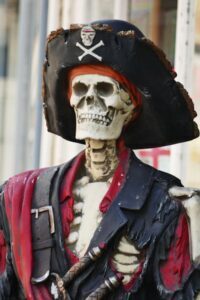



December 27, 2024
The Liberation of Animal Crackers
Hello, Kids and All Readers,
I hope each of you is enjoying a fun, festive holiday season in whatever manner makes you happy!
Do you have any favorite December holiday traditions? I do! Have any inspired you to discover their history?
When my daughter was a little girl in the 1980s, I always tucked a small wrapped box of Barnum’s Animals Crackers in among her gifts. She was so happy seeing those circus animals decorating the small red, yellow, and white box and came to expect–and receive!–the treat each Christmas. (“Barnum” refers to the nineteenth-century showman and circus entrepreneur, Phineas Taylor “P.T.” Barnum.)
I have continued sending those treats to my grownup girl each December. For many years, I have included four boxes: one apiece for her, my son-in-law, and my two grandchildren.
But have you noticed? The boxes have changed over the past few years! How and why? Please read on to learn why.
Becoming the researcher that writing necessitates, I decided to investigate the history of animal crackers and found thirteen interesting facts to share with you:
Animal crackers were first imported from England by the United States in the late 1800s.Due to the crackers’ popularity, Stauffer’s Biscuit Company in York, Pennsylvania, started making them domestically in 1871.The National Biscuit Company (Nabisco) began producing them in New Jersey in 1902, and named them “Barnum’s Animals” in honor of the Ringling Brothers and Barnum and Bailey Circus. The small, circus-themed boxes sold for five cents and showed animals looking through the bars of their circus-wagon cages.That same year, a string was attached to each box’s top so they could be hung on Christmas trees. Those strings are still on today’s boxes with 8,000 miles of it used annually!There have consistently been about twenty-two crackers per small box.In 1948, Nabisco officially changed the treat’s name to “Barnum’s Animals Crackers.”Fifty-three animals have been represented since 1902. The current crackers are the bear, bison, camel, cougar, elephant, giraffe, hippo, hyena, kangaroo, koala, lion, monkey, rhino, seal, sheep, tiger, and zebra.To celebrate its 100th anniversary in 2002, Nabisco held a public contest and added the winning animal–the koala–to the menagerie.Depending on the manufacturer, the crackers come in various flavors including plain vanilla, chocolate graham, cinnamon graham, pink and white-frosted with rainbow sprinkles, chocolate covered, and cotton candy.Nabisco produces more than 40 million boxes of its animal crackers a year for sale in the United States and exports them to seventeen countries worldwide.In addition to US companies and the UK’s Cadbury’s confectionary, animal crackers are produced in Germany and New Zealand.In 2017, the Ringling Brothers and Barnum and Bailey Circus ceased operation. So, in 2018, Nabisco responded to requests from PETA (People for the Ethical Treatment of Animals), and released new package art displaying the animals liberated from their circus boxcar cages. The beasts now roam freely in natural habitats!Animal crackers appear in popular culture, including the 1930 Marx Brothers’ movie, Animal Crackers; and the 2017 film Animal Crackers, where magical animal crackers turn people into the beasts in the boxes.So, get a clue, my friends. I for one am pleased that those animals no longer gaze out from behind circus-wagon bars but are free to roam at will! What holiday traditions have captured your interest lately?
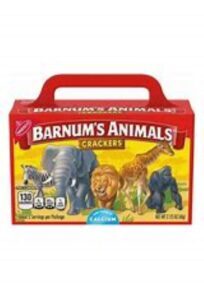

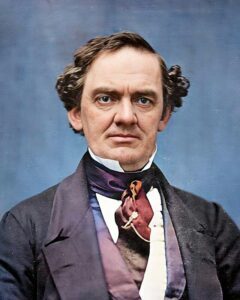

Photo Credits: public domain images from wikimedia commons
November 11, 2024
Heart Unbroken
Dear Kids and All Readers,
As I write this on a sunny, warm Monday afternoon, I think back thirty years ago to Friday, November 11, 1994, one of my darkest, scariest days. Fortunately, I am here to share about it. But I almost wasn’t!
Right about now–3:30 p.m.–back in 1994, I was halfway through a six-hour surgery in my hometown of San Diego, California, where I still live.
A bit of backstory: That summer, I began experiencing shortness of breath and chest pains. My new doctor ordered some tests–bless her heart. Finally! Someone in the medical profession was taking my complaints seriously.
In 1960, when I was seven years old, the pediatrician told my mother that I had a heart murmur. I was the last kid to finish races, and I never had the energy to learn to swim. No one wanted me on their kickball team at school because I was forever exhausted and an easy “tag-out.” I found excuses at recess to stay indoors to read, thus avoiding the playground. I became a great reader (Thank you, Nancy Drew!) but missed a lot of fun, sun, exercising, and socializing.
The 1994 test results came back. The original diagnosis had been wrong! When I heard the news, I was elated that there was a correct diagnosis. Simultaneously, my skin crawled as I learned the truth.
The doctor explained that I had an atrial-septal birth defect, commonly known as a congenital hole in the heart. It was in the wall (septum) between my heart’s two upper chambers (atria). That caused my heart to pump blood erratically. As a result, I had been deprived of sufficient oxygen for decades. No wonder I was always tired and pale! To make matters worse, over time, my heart and lungs had enlarged to dangerous proportions. It was a miracle that I was still alive.
Surgery was necessary if I were to survive to see my thirteen-year-old daughter graduate from high school. What??? But, boy! My doctor, also a mother, knew those were the right words to convince me to check into the hospital ASAP. So, I had my Will and Trust drawn up and tackled some difficult conversations with my young daughter to try to assuage her fears. Then, calming my own tremors, I walked, head held high to feign confidence, into that huge antiseptic-smelling building on what was a cold, drizzly November 11, 1994. I dared the place to take me out!
The lengthy surgery was extended when doctors discovered that the hole in my septum was so large, I had no wall. They made one out of a piece of my pericardium, the fluid-filled sac that surrounds and cushions the heart. After the patch job was completed, I was wheeled off to the ICU, and my family was given a good report. But an hour later, I had a seizure that the medical staff could not explain. Then, a short time later, I had another.
The weekend slipped away as I failed to wake up. On Saturday evening, the doctors told my daughter and other family and friends to prepare for my not making it. And if I did, I would not be the same person they had known. My poor, brave daughter plunked herself down next to my bed in the ICU and refused to leave. All the tubes emanating from my body didn’t scare her away. My mom and aunt went to the hospital chapel to pray. My daughter’s dad, other family, and friends hunkered down for hours in the waiting room.
Then, would you believe it? On Sunday evening, when doctors were looking to my family to make a decision about whether or not to sustain my life, I miraculously woke up! I lifted my head and noticed that over a dozen loved ones surrounded my bed. I frowned and said, “What’s everyone doing here?” The cheers were deafening. I shrugged and went back to sleep, waking up on Monday morning my same self in a regular hospital room, not the ICU. I had lost a weekend, but I had not lost my life.
A team of doctors came in that morning and told me an air bubble or two must have gotten left in one of the heart-lung machine tubes despite their extra efforts to prevent it. That likely caused the seizures. They also said something chilling. Given the extent and duration of my heart problem, I should not have lived past the age of twenty-six or survived childbirth! So why had I accomplished both feats? They said it was because I had done the right things all my life: I exercised as best I could, never smoked, didn’t take recreational drugs, or eat unhealthily. If I had done any one of those things differently, I would not have survived. Yikes.
Months later, I returned to work and told my students my big story. I said that my heart stopped beating for over six hours, but I lived to tell about it! To address their puzzled looks, I explained that the surgeons had to stop my heart and put me on a heart-lung machine to breathe for me since they couldn’t operate on a beating heart. After answering their many questions, my story ended with an important lesson: You never know when you’ll need every ounce of strength and good health you have to keep yourself alive. So always make wise choices! Don’t smoke, take drugs not prescribed by a doctor, or eat too much junk food. And love your family and friends. Good health starts in childhood.
Today, I celebrate my thirty-year-old, normal-sized, unbroken heart and healthy lungs, my resilient daughter, whom I have gotten to see grow up, finish college, marry, and give me two adorable grandkids, the joy of many loved ones and good times, and the talented doctors who saved my life.
I had my old age in youth. Now, I get to enjoy my childhood.






